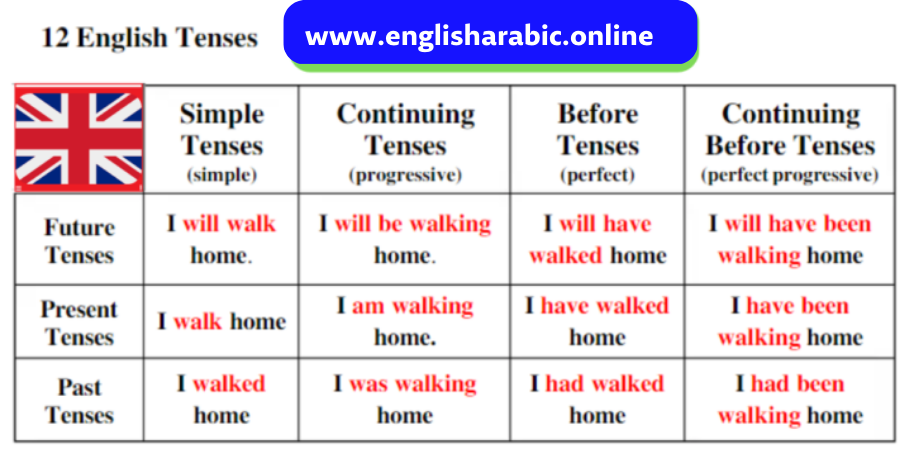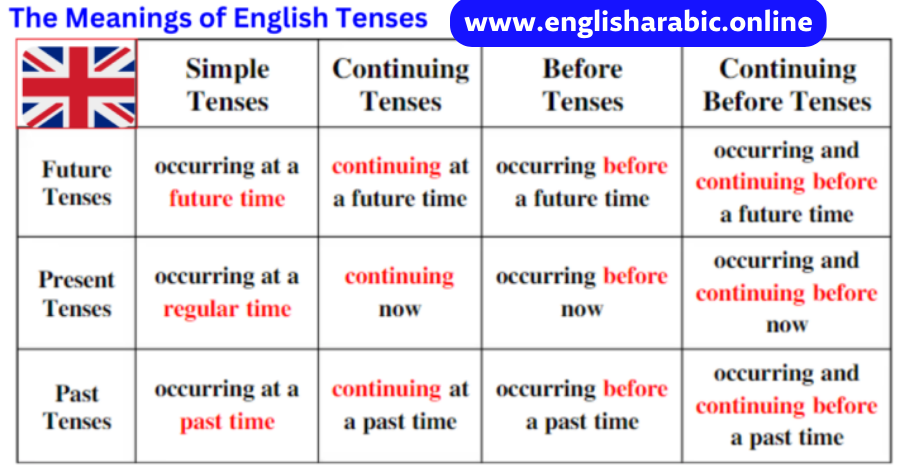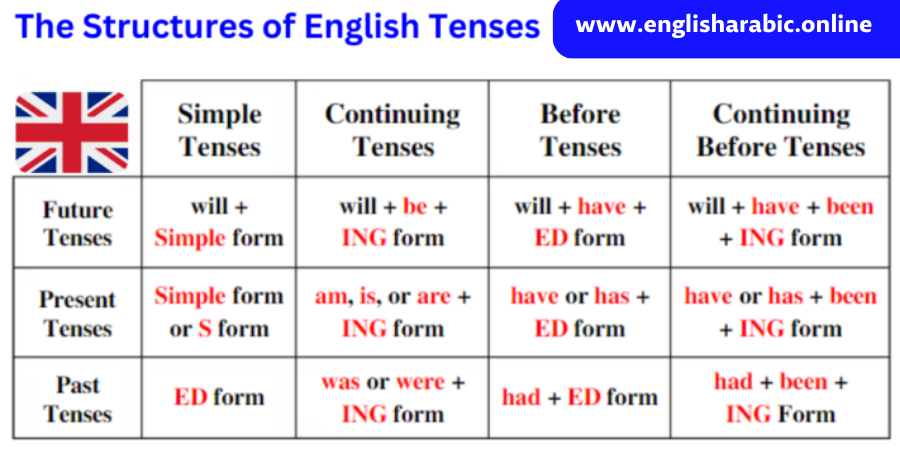Simple Past Tense
The English Tense System
The links below are to lessons for each of the 12 basic tenses.
In each lesson we look at two aspects of the tense:
- Structure: How do we make the tense?
- Use: When and why do we use the tense?
Some lessons look at additional aspects, and most of them finish with a quiz to check your understanding.
- Present Tense
- Present Continuous Tense
- Present Perfect Tense
- Present Perfect Continuous Tense
- Past Tense
- Past Continuous Tense
- Past Perfect Tense
- Past Perfect Continuous Tense
- Future Tense
- Future Continuous Tense
- Future Perfect Tense
- Future Perfect Continuous Tense
Tenses
We use different tenses to describe the time that the verb refers to.



Past simple tense
Have you ever wanted to describe a past situation in English and didn’t know how to do it? The past simple is one of the most used verb tenses in English along with the present simple and present continuous, so it’s important to understand how to use it. Once you know the past simple it’s much easier to have a conversation and communicate clearly to the person you’re talking to.
We use simple past when we talk about actions that happened and were completed in the past. Usually, we make the simple past by adding -ed to a base verb. However, many common verbs are irregular, so they change in different ways.
When to Use the Simple Past Tense
A Completed Action in the Past
If you want to talk about an action that was started and completed at a specific time in the past, use the simple past tense. Even if you don’t mention when the action was completed, you have a specific time in mind; otherwise, you would use the present perfect tense.
- Julie wished that she had a million dollars.
- I graded essays all afternoon.
- You finished dinner already, right?
Multiple Past Actions in a List
When multiple actions were started and completed at specific times in the past, also use simple past tense. Although some events necessarily happen before other events, you don’t need to use the past perfect tense unless you really want to emphasize the fact that something happened before something else, or the sequence is unclear.
- John woke up at 6:00, jogged for an hour, and ate breakfast.
- I washed the lettuce, chopped it, and added it to the salad.
Narrative
Simple Past is the tense most often used in fiction and when telling a story. Although it’s common to use the past perfect tenses to talk about something that happened before the main events in the story, the main events and the details surrounding them will be in the simple past (or past continuous).
- Allen found a table at the cafe and ordered a tall coffee. It was already after midnight, but he was feeling too excited to sleep and didn’t want to try. Just that morning, he had been heartbroken and depressed. But that afternoon, he had met Mona. He pulled out some books and tried to study, but his mind kept drifting away.
The Details of News and Events
When reporting precise details of news and events, use the simple past tense. You can use the present perfect tense when talking about an experience you’ve had:
- I’ve been to Quebec.
But you would never use the present perfect tense to add details:
I’ve been to Quebec with my French class in high school.
Instead, use the simple past tense:
- I went to Quebec with my French class in high school. The bus ride took 18 hours. We all stayed with different Quebecois families, and met up every day to tour the city. Most of us were surprised that we could communicate with the locals after just two years of classes.
Past Habits, Generalizations, and Facts
When something was a habit, happened many times, or was a generalization that was formerly true, use simple past tense. This is similar in meaning to sentences with “used to.”
- I studied Spanish in high school.
- Jane was shy when she was a child, but she isn’t anymore.
- Einstein invented the theory of relativity.
- Margaret walked home from school every day.
- We played checkers every night last summer.
Duration in the Past
You can use simple past to talk about things that happened for a long time, as long as they started and ended at specific times in the past.
- East Germany was part of the USSR until the Berlin Wall came down.
- We lived in Japan for two years.
Negative Statements
To make the negative with the simple past tense of “to be”, just add “not” after it.
- I was not happy about the decision.
- You were not at home.
- Amanda was not able to pick you up from the airport.
To make the negative with the simple past tense of all other verbs, add “did not” (didn’t) before the base verb. There are no irregular verbs in the negative.
- She didn’t walk to work today.
- We didn’t know the answer to the question.
- The children didn’t play outside because it was raining.
Question Forms
Questions with “To Be”
To make a yes/no question with “to be” in the simple past, put the verb before the subject:
- Were you upset?
- Was I wrong?
- Were you going?
To make an open-ended question, put a question word (who, what, where, when, why, how) before the “was/were” and subject:
- Why were you upset?
- Why was I wrong?
- Where were you going?
Questions with Other Verbs (not “To Be”)
Information Questions about the Subject:
To make a question about the subject of a sentence, use a question word as the subject. The form is: question word + verb + rest of sentence:
- ??? baked the cakes. –>
- Who baked the cakes?
- ??? people ordered flowers today. –>
- How many people ordered flowers today?
- ???’s dog ran away. –>
- Whose dog ran away?
Questions about the Verb or Words after the Verb:
To make a yes/no question about the verb or words after the verb with any other verb, put “did + subject + base form of the verb.”
- Did the children eat already?
- Did you find your keys?
- Did Sarah fail her test?
To make an open-ended question about the verb or words after the verb with the simple past tense, put a question word (who, what, where, when, why, how) before the “did” and subject:
- What did the children eat?
- Where did you find your keys?
- Why did Sarah fail her test?
<hr /

